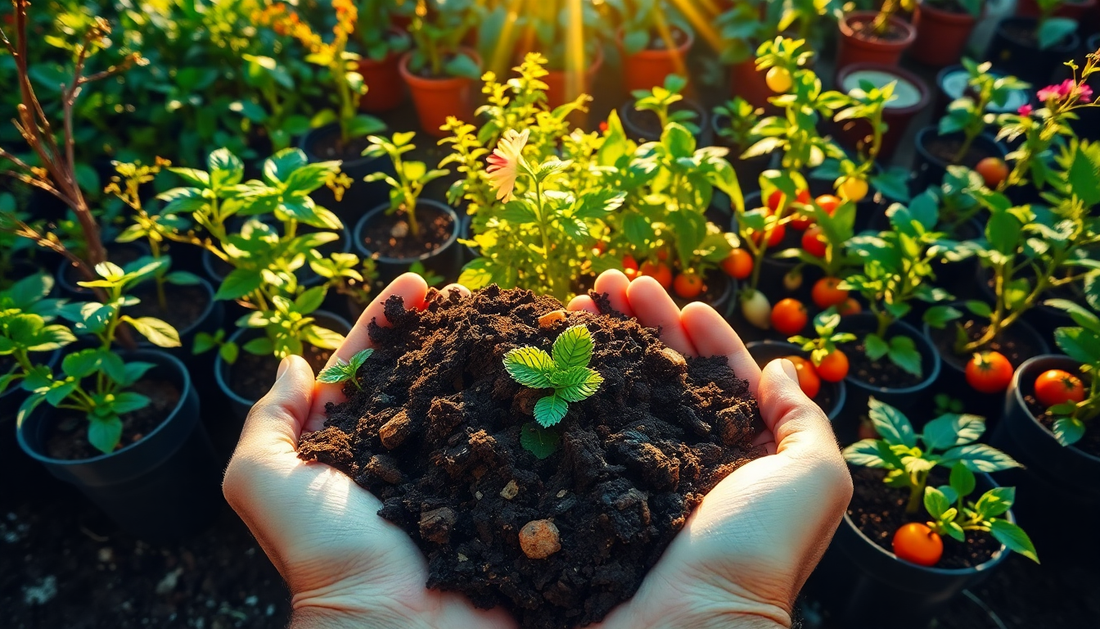
Unlock the Secret to Thriving Plants: How to Boost Soil Fertility in Potting Mix
As the owner of Idyl, an online plant and gardening shop in Bangalore, I've seen firsthand the importance of maintaining healthy soil for vibrant, thriving plants. Whether you're an experienced green thumb or just starting your gardening journey, understanding how to boost soil fertility in your potting mix can make all the difference in the success of your plants.
In this comprehensive guide, we'll delve into the science behind soil fertility, explore the benefits of a nutrient-rich potting mix, and provide practical tips to help you create the perfect environment for your plants to flourish.
The Importance of Soil Fertility
Soil fertility is the foundation of a healthy, productive garden. It refers to the ability of the soil to provide the essential nutrients, moisture, and structure that plants need to grow and thrive. A fertile soil is teeming with beneficial microorganisms, organic matter, and a balanced pH, all of which work together to support plant growth.
When your potting mix is lacking in fertility, your plants may struggle with issues such as stunted growth, yellowing leaves, and susceptibility to pests and diseases. On the other hand, a well-nourished soil can help your plants reach their full potential, producing vibrant foliage, abundant blooms, and bountiful harvests.
Understanding the Components of Soil Fertility
Soil fertility is a complex and dynamic system, but at its core, it's all about the balance of three key elements: nutrients, organic matter, and soil structure.
Nutrients
Plants require a variety of essential nutrients to thrive, including nitrogen (N), phosphorus (P), and potassium (K), as well as secondary nutrients like calcium, magnesium, and sulfur, and micronutrients such as iron, boron, and zinc. These nutrients are responsible for various plant functions, from photosynthesis and root development to flowering and fruit production.
Organic Matter
Organic matter, such as decomposed plant and animal materials, is the lifeblood of healthy soil. It not only provides a slow-release source of nutrients but also improves soil structure, water-holding capacity, and the overall health of the soil microbiome.
Soil Structure
The physical structure of the soil, including its texture, porosity, and aggregation, plays a crucial role in soil fertility. A well-structured soil allows for proper air and water movement, root penetration, and the activity of beneficial soil organisms.
Boosting Soil Fertility in Potting Mix
Now that we've explored the key components of soil fertility, let's dive into the practical steps you can take to create a nutrient-rich potting mix for your plants.
Incorporate Organic Matter
One of the most effective ways to boost soil fertility is by adding organic matter to your potting mix. This can come in the form of compost, aged manure, peat moss, or even shredded leaves or bark. Aim to incorporate at least 20-30% organic matter into your potting mix to provide a steady supply of nutrients and improve soil structure.
Balance Nutrient Levels
While organic matter is a great source of nutrients, you may also need to supplement your potting mix with additional fertilizers to ensure a balanced nutrient profile. Look for slow-release, organic fertilizers that contain a blend of macronutrients (N-P-K) and micronutrients. Apply these according to the manufacturer's instructions, taking care not to over-fertilize.
Adjust pH Levels
The pH of your soil can greatly impact the availability of nutrients to your plants. Most plants thrive in a slightly acidic to neutral pH range (between 6.0 and 7.0). If your potting mix is too acidic or alkaline, you can adjust it by adding lime (to increase pH) or sulfur (to decrease pH).
Encourage Soil Microorganisms
The soil microbiome, consisting of bacteria, fungi, and other beneficial organisms, plays a crucial role in nutrient cycling and soil structure. Encourage the growth of these microorganisms by incorporating compost, using organic mulches, and avoiding the use of harsh chemical fertilizers or pesticides.
Improve Soil Structure
A well-structured soil allows for proper air and water movement, which is essential for plant growth. You can improve soil structure by adding materials like perlite, vermiculite, or sand to your potting mix, which will help to improve drainage and aeration.
Practice Sustainable Gardening Techniques
Adopting sustainable gardening practices, such as composting, crop rotation, and minimizing soil disturbance, can also help to maintain and improve soil fertility over the long term.
The Benefits of a Nutrient-Rich Potting Mix
By taking the time to boost the fertility of your potting mix, you'll be rewarded with a host of benefits for your plants:
- Improved plant growth and vigor
- Increased resistance to pests and diseases
- Enhanced nutrient uptake and utilization
- Healthier root development
- Improved water-holding capacity and drought tolerance
- Increased yields and productivity
In short, a nutrient-rich potting mix is the foundation for a thriving, vibrant garden. By investing in the health of your soil, you're investing in the long-term success of your plants.
Conclusion
Unlocking the secret to thriving plants starts with understanding the importance of soil fertility and taking the necessary steps to create a nutrient-rich potting mix. By incorporating organic matter, balancing nutrient levels, adjusting pH, and encouraging a healthy soil microbiome, you can provide your plants with the optimal growing conditions they need to reach their full potential.
At Idyl, our mission is to empower gardeners of all levels to cultivate lush, healthy gardens. Whether you're a seasoned green thumb or just starting your gardening journey, we're here to support you every step of the way. Explore our selection of high-quality plants, fertilizers, and gardening tools, and let us help you unlock the secret to a thriving, vibrant garden.







No comments